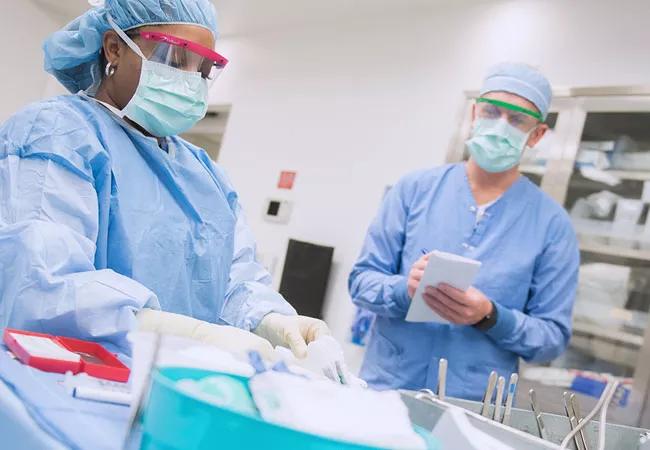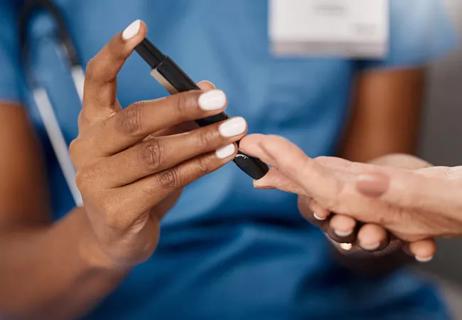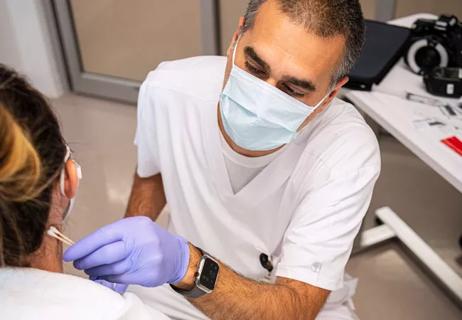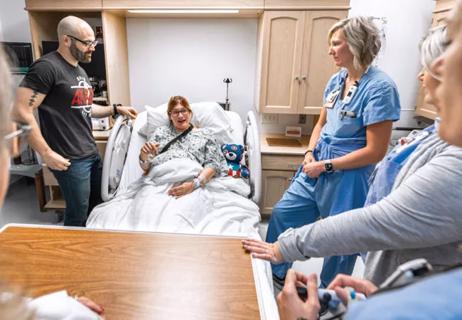The athletes of healthcare learn from occupational therapist colleagues

As nursing specialties go, a surgical assignment may sound to some like a relatively relaxing choice. All the work takes place right there in the operating room, they reason, and the patients are asleep.
Cleveland Clinic is a non-profit academic medical center. Advertising on our site helps support our mission. We do not endorse non-Cleveland Clinic products or services. Policy
Christina Turner, ADN, RN, has heard those theories many times during her five years as a spine surgery nurse at the Cleveland Clinic Neurological Institute. In reality, she says, surgical caregiving is physically and emotionally challenging for nurses, technicians and physicians. Helping patients through their most vulnerable hours offers tremendous satisfaction, and Turner believes that it’s essential to attend to details of safety and wellbeing for team members to thrive long-term in their careers.
That’s what prompted her to create the Neuro-Spine Operating Room Safety Initiative, a program with a multi-pronged approach:
The project also aims to build a curriculum so that newly hired caregivers can adopt best practices from the start.
Turner’s idea was born in 2019. She was recovering from surgery to mend a repetitive-motion injury in her rotator cuff and knew that other caregivers also suffered from aches and pains. They spend long hours lifting, bending, maneuvering equipment and standing to ensure the best care for their patients.
“In the morning, we prepare instrumentation, medications and equipment for the operating room,” Turner explains. “We move beds in and out so that surgeries can be done. We move giant microscopes that weigh 300 to 500 pounds. We have metal pans, weighing up to 35 pounds, that contain instruments, and we may use two to 15 of those per surgical case. And then we move our patients, which involves lifting, pushing and pulling.”
The work will always involve physical labor, but Turner knows that attention to ergonomics and equipment can improve the experience. With support from Michael Steinmetz, MD, Chairman of the Department of Neurosurgery, and nurse manager Nicholas Shannon, SN, RN, CNOR, Turner invited colleagues from the Institute’s occupational therapy department to observe how the OR caregivers went about their tasks and to recommend tactics for improvement.
Advisers on the project were Pamela Dixon, MOT OTR/L, and Michael Milicia, OT/L, occupational therapists. “Our surgical caregivers face many unique risk factors and stressors that need to be addressed,” Dixon says. “Until you observe these valuable caregivers in their day-to-day work, the challenges they face can be difficult to fully appreciate.”
“We liken this team to athletes,” Milicia adds. “They’re clinical athletes who require not just specialized professional knowledge, but also a level of fitness and body awareness and preparation to do their very important jobs.”
They observed RNs, surgical technicians and surgical assistants in the spine OR perform essential tasks before, during and after a surgery. “We noted the posture and positions that both the task and environment imposed on their performance of those tasks,” Milicia says. “We identified potential biomechanical stressors and developed training to minimize these by educating them.”
Recommendations included:
“We also made recommendations regarding equipment and reorganized (by weight and frequency of use) the equipment storage area,” Milicia adds.
In some cases, Turner says, team members expressed skepticism about how helpful these techniques could be. “In these training sessions, everyone seems to have ‘aha’ moments,” Turner says. “When they actually try it, they see that it works.”
Several nurses and technicians have been designated as champions of the new methods, and help reinforce better techniques. As Milicia notes, “Motor habits die hard. We move the way we move today because that is how we moved yesterday and the week, month, year before. The department champions who received additional training are able to be the ears and eyes of this project so that they can remind the individuals when they fall back into old patterns of movement.”
Dixon agrees. “A key part of the initiative is developing a team approach and mindset to helping each other to follow the recommendations,” she says.
Equipment changes include new anti-fatigue mats to help combat the effects of standing in place all day. Caregivers might work three surgeries in a day or have one long, complex case. “If it’s a big scoliosis case, it can last 10 hours,” Turner says.
They are trialing new operating patient room tables and microscopes and have purchased replacements for outdated equipment. Supply areas were reorganized with an eye toward reducing caregivers’ physical stress.
The team is now participating in training to manage the psychosocial stresses of the job, Turner says. In a fast-paced, high stakes environment such as the spine OR, these issues can be more challenging than the physical demands.
“It’s important for caregivers to know that the hospital has resources for them,” Turner says. “That’s one of the reasons I wanted to share information about this program. Some have not heard about Code Lavender, which supplies well-being support for patients, families or caregivers.”
At the introduction of the Neuro-Spine Operating Room Safety Initiative in May, OR caregivers completed a survey that will be repeated after all training is complete. So far, the anecdotal feedback has been positive.
“Of course we always take care of our patients, that’s why we’re here,” she says. “But caregivers are grateful that we are taking care of each other, too.”
Turner also is gratified that a nurse-based initiative was welcomed and embraced in the surgical environment, a traditionally physician-driven space. “As nurses, we should all be proud of what we do, and we should all be willing to make change,” she says. “I remember when I was starting out in surgical nursing and a nurse said to me, ‘This isn’t nirvana.’ Those words stayed with me. I wanted to change that. This is a rewarding job, and we have things to offer to ensure that we are happy and keep doing it.”

Nurses play pivotal role in patients’ ability to recover in the comfort of their own homes

Advocating for patient safety is imperative in fast-paced surgical settings

Advice for those pursuing a WOC nursing career

Redesigned protocols enhance infection-prevention measures

Longevity in healthcare, personal experiences may provide caregivers with false sense of confidence

Specialized team prioritizes trauma-informed care and evidence collection

Collaborative approach leans on expertise of nurses

TeamBirth aims to improve outcomes by facilitating collaboration between patients and caregivers